Some of the best sports car racing ever to come out of America
The Trans-Am series has come and gone numerous times, yet it was never better than it was during the heyday of the SCCA’s original incarnation, which most classify as 1966-72 or so.
I’ve often asked myself what makes that era so magical, but it just – is; the cars were great fun, the driver names and talent big, and the racing action spectacular.

Why has no sanctioning body or group of owners/promoters ever been able to revive it successfully? The reasons are many, and the answers relatively straightforward, IMHO.
Attend any vintage or historic race meet, and if there’s a Trans-Am class, you’ll find it heavily populated with great cars, with that race well attended, action-filled, and enjoyed by the drivers and crowd alike. So that original T-A Formula had The Right Stuff.
The series’ greatness was founded in the original vehicle formula. The cars themselves needed to be homologated production coupes and 2-door sedans, with engine sizes limited to 5.0-liter (305 cubic inches) or less for the top tier class, and 2.5-liters for the primarily import group. All of this meaning they were built out of real cars, not tube-framed, plastic-bodied, semi-NASCAR silhouette racers.

Every early gen Trans-Am racer began life as a factory body/chassis in white, or a production example pulled straight off an assembly line (or in a few cases, a dealer showroom floor).
In the 5-liter group, that means American branded muscle/pony cars: Mustang, Cougar, Camaro, Firebird, Challenger, ‘Cuda, Javelin, AMX, and such. Rear-wheel-drive cars that already had a sporty image and a thundering V-8 engine. Cars that looked genuine and that spectators and sponsors could relate to; “Win on Sunday” and all that.
Building and running these cars were attractive to and attainable by a wide variety of teams. Of course, the big factory teams participated: Penske, Bud Moore, Holman Moody, All American Racers, and other big gunner outfits, yet, these were cars that capable backyard teams could build and maintain. Obviously it wasn’t always easy going against the well-financed, big-game teams, but on occasion, the little guys won, and they always played hard.

And how about those names behind the helmets: the incomparable Mark Donohue, three-time Trans-Am champ George Follmer, Dan Gurney, Parnelli Jones, AJ Foyt, Ed Leslie, Jerry Titus, Sam Posey, Peter Revson, and dozens of others that fans knew and cheered for.
The series attracted the big game drivers because the money and sponsorship opportunities were attractive, the big Indy and NASCAR teams played, and the racing was hard and fast. Finally, the series was a traveling circus, and the action played out on the most iconic racecourses in North America.

This formula would work today; they still make Mustangs, Camaros, Corvettes, and Challengers. This or that Porsche or BMW would also likely fit the formula.
Use the 5-liter engine spec, or perhaps step it up to 5.5 or 6.0 with some equivalency factors to accommodate turbocharged machines. Strip them down, cage them up, and uncork those exhausts, just like they did in the beginning – but build the series around real cars, not tubes, fiberglass, and stickers.
Invest the money to offer competitive, attractive pay and prize packages for the teams, drivers, and sponsors. Back it up with a killer television/streaming service broadcast plan which attracts both sponsors and fans.
It wouldn’t have to be the fastest or most high-tech racing in the world, but the action would be (pardon the reference) fast and furious.

There are similarities here to the Australian V8 Supercars Championship Series, which is currently based on 5.0-liter V-8 powered production chassis GM and Ford models.
I do not doubt that if the right series owner/promoter/sanctioning body built a modern Trans-Am series based on the authenticity and tenets of the original, that it would be a success. Great racing with cars we know, contested by the best in the biz. Now wouldn’t that be something?
Photos Courtesy of Follmer Collection, Ford Motorsport Archive, Amelia Island Concours d’Elegance


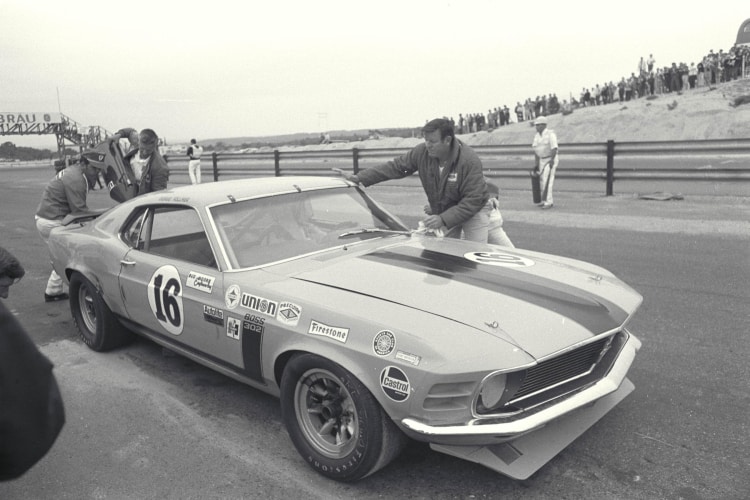

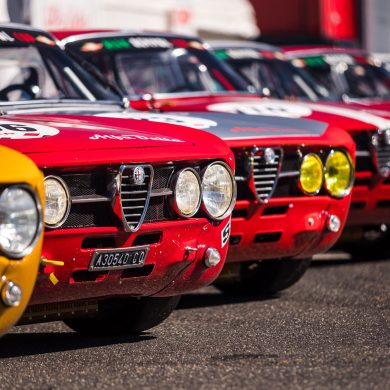
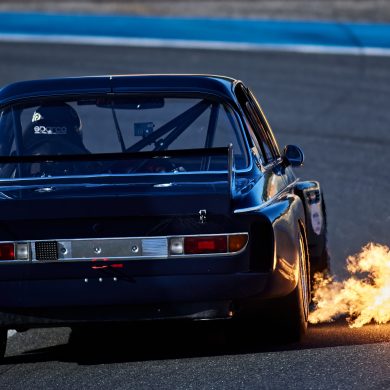
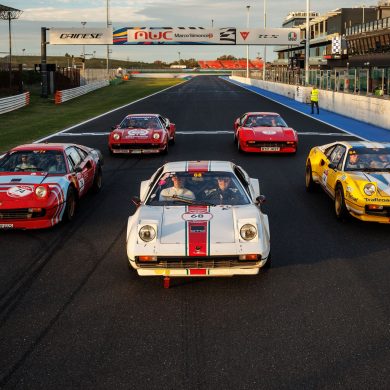
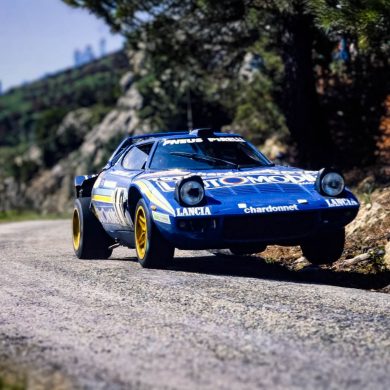
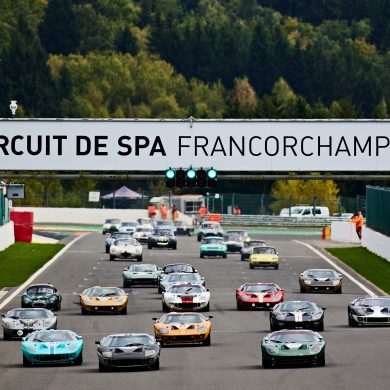


That would be great to see that class of cars revived! And with the economy the way it is now, the ” Race on Sunday…” theory might prove to be a shot in the arm the auto industry needs.
Amen!
How can sponsors/manufacturers not see the value in “win on Sunday “ in REAL, attainable, relatable cars? That and the close competition would way more than offset the lack of top speed. Simple.
That series was so much fun to watch. I would love to see it come back.
Good story Matt!
But you can no longer compare vintage trans am to the supercars in oz!
They have used a spec chassis for some time now,
I noticed this a few years ago when a nissan altima was shown leaving the pits burning its REAR tires.
I haven’t seen any RWD altimas for sale around here!
The current T/A 2 class is also a tube chassis, and has very competitive racing among 3 makes, with good sized fields. Very fun to watch.
I absolute agree! While I like Indy style racing, Formula 1 and LeMans type endurance racing, it would be truly exciting to see some production style cars competing regularly and I DON’T mean fake production pieces the likes of which have overtaken NASCAR.
Matt,
You are so correct. Tech has trumped excitement in today’s racing. Costs are out of control. Bring back the fury, sound and smells of simple racing. Real production cars that are relevant to normal people. Manual gearboxes. Have you ever watched a NASCAR road race? Big cars, big engines, lots of close- in contention. That is the spirit we need to recapture.
The current TA series has exactly what you are looking for, Matt, in the TA2 class. check it out.
The TA Series actually gives the TA2 class its own race, with competitors entered in exactly the kind of race cars you describe and want.
The TA2 has more competitors entered than TA, SGT and GT individually, and that is probably why these three classes are combined for their own race.
I agree with you that regards the TA class, they are tube framed, solid rear axle, 850HP, silhouette cars.
There are only three or four top competitors in the total TA field. From 4th or 5th back, the competitors are 2-3 seconds off pace. The top 3 or 4 run away from the rest of the field.
The entire series has some top name drivers, Boris Said, Greg Pickett, Chris Dyson, Adam Andretti, Tommy Drissi, Paul Fix, Lou Gigliotti, Simon Gregg [Peter’s son], and Amy Ruman [Bob Ruman’s daughter]
The competitive, real race, action, and TA knows it, is the TA2 class. That is typically the premier Sunday race. Again, check it out.
The only problem, they are still silhouette racers. I was at the Trans Am race this last weekend. Wandered through the paddock; the Mustangs were mostly powered by LS based (GM) engines. Apparently, there is a spec motor that a lot of teams use. At least the Challenger had a Mopar engine.
All had essentially the same brake package, same shocks,same control arms.
It is great racing, but not along the lines of the original Trans Am
Watkins Glen and Lime Rock were perfect places to watch these wonderful cars in the early 1970’s.
God I hope the ‘suits’ are reading this! Although I attended races when some cars had tape over their headlights, wire wheels, chrome bumpers, and even a few convertibles (with roll bars) I’d be thrilled to go back to the early seventies. I truly wonder what attendance would be if we didn’t have the virus situation. The passion and attendance have to be eroding.
One of the major hallmarks that made it so popular is that it was a “manufactures championship”. Drivers were optional but not named champions. The cars were based on stock homologated marks, with parts numbers to match with an occasional vin number for the guy that wasn’t factory based.
Unfortunately Australia’s premier touring cars series has developed into a poor man’s NASCAR series between Holden (no longer produced or sold in Australia) and Ford’s imported and sold here Mustang. Racing is procession-like and mostly boring with more than a few teams/cars/drivers just making up the numbers and unlikely to have success which sponsors demand which makes it all fairly irrelevant to many motor sport fans.
Great article.
I’d refer you to http://www.historictransam.com as a starting point for your Trans-Am glory days fix…
Wonderful idea to resurrect it! Perhaps something very similar.
Isn’t TA2 also tube frame? Maybe TA3 with better drivers would be closer?
Thanks,
G. Harp
Dumb take. Fans had this, but stopped watching during the late 1970’s when the cars sucked (remember they demand stockish production cars, but also want awesome fast stuff). Since then, you could have watched the exact thing you are writing about here, called:
Champion Spark Plug Challenge
Motorola Cup
KONI Challenge
KONI Sports Car Challenge
Continental Sports Car Challenge
Michelin Pilot Cup
Also, there is a global GT3 platform in every single major GT racing series featuring cars with nearly stock OE engines, and stock unibody under a bunch of flares and wings and stuff. These are cars you can buy from the factory ready to go, just race prep and have at it. We just had another banger at Sebring for 12 hours in the GTD category, maybe encourage your readers to watch instead of complaining that no one is racing your favorite car from high school.
Thanks!
Stop complaining, start watching!
It all makes too much sense, what a great category without the insane expense. Stick shift, no huge aero and inexpensive control tyres and components. Possably we my discover some new talent without Millionaire bank balances. Why not a world series. Tell me this wouldn’t attract some attention as a contrast support race at a GP meeting which the fans can relate to.